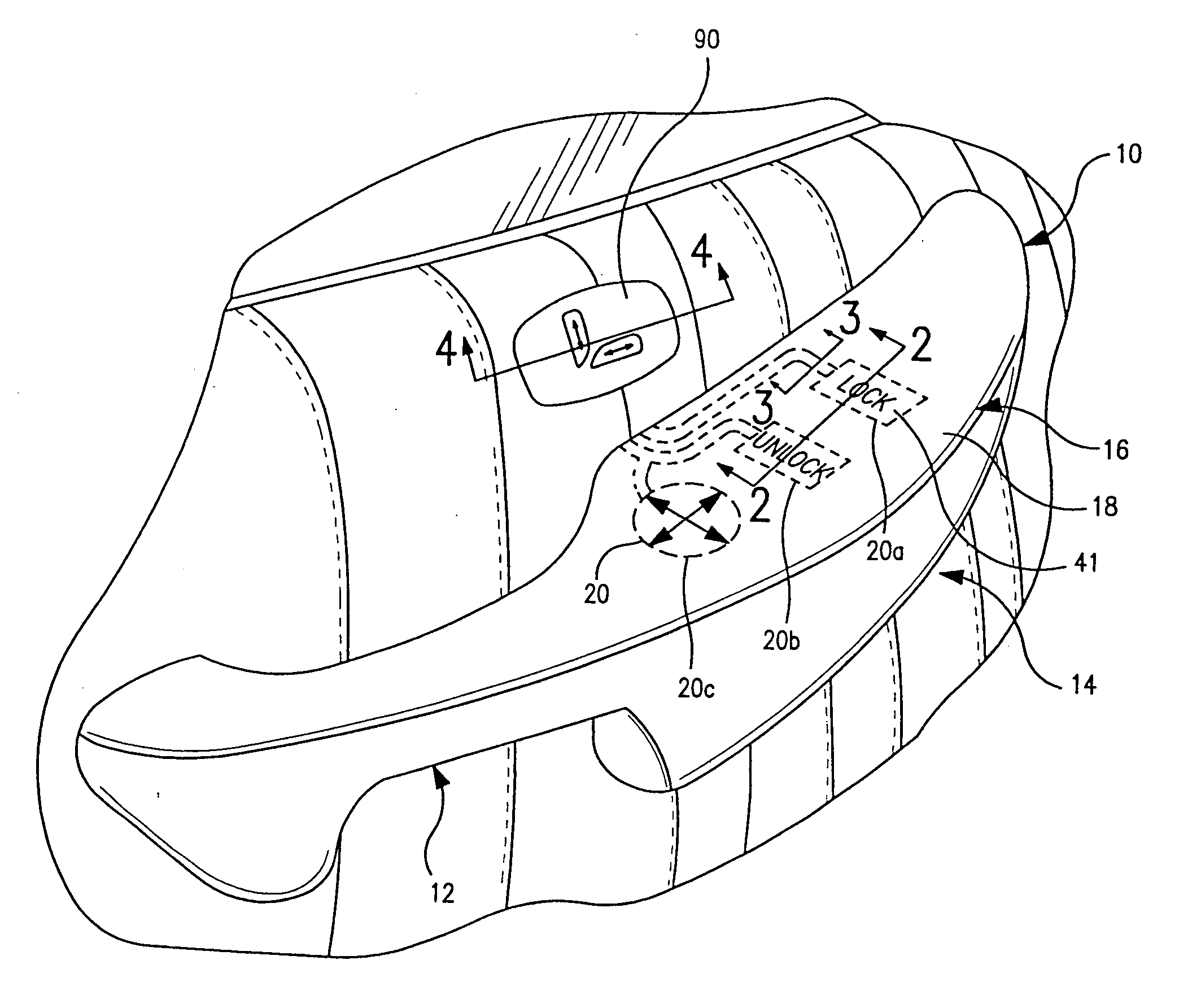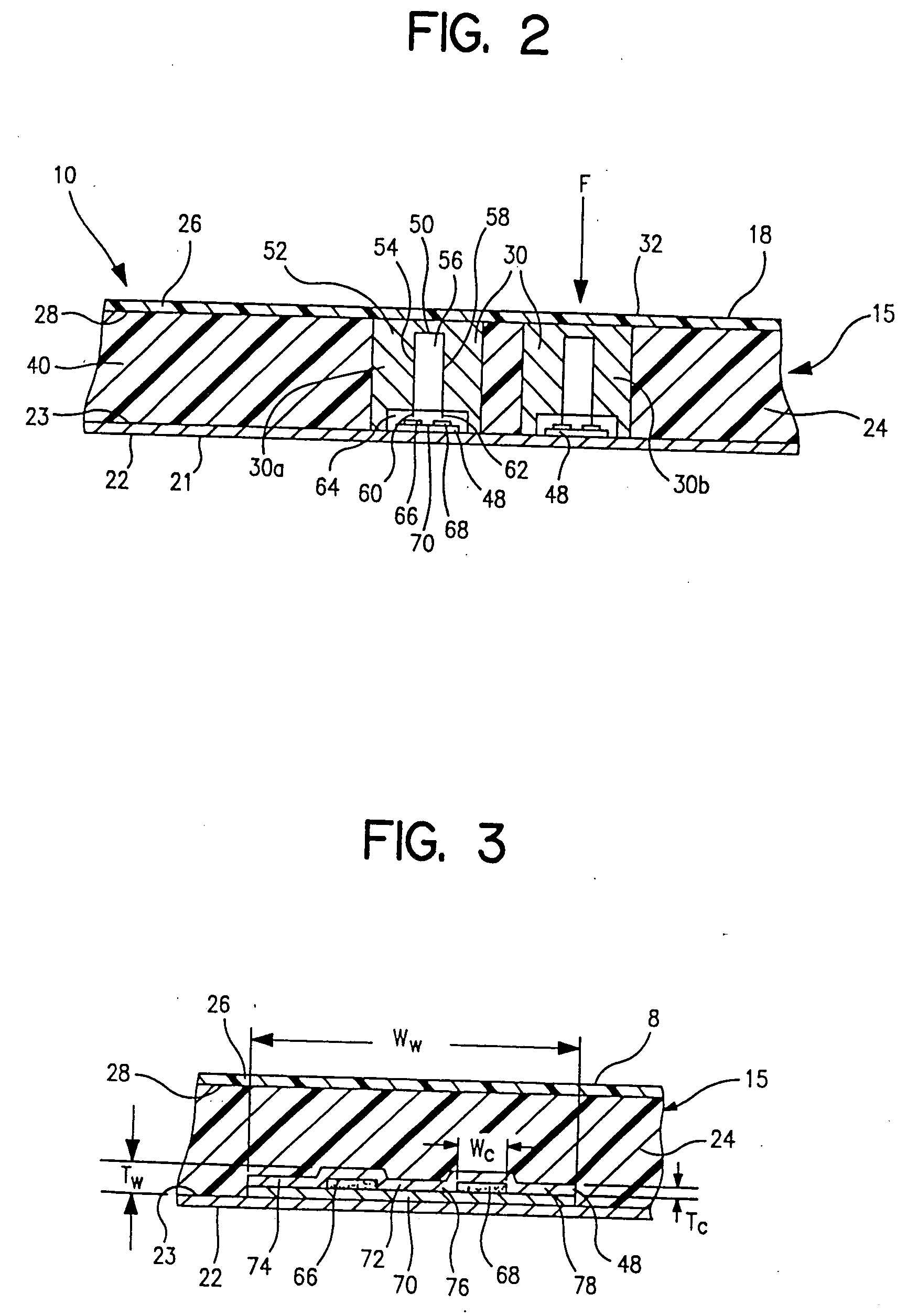Method of marking a skin for a vehicle interior panel
a technology for interior trim and skin, applied in the direction of electric/magnetic/electromagnetic heating, vehicular safety arrangements, pedestrian/occupant safety arrangements, etc., can solve the problems of disproportionate production costs, expensive options, albeit expensive and environmentally challenging, etc., and achieve the effect of reducing contact, noise and wear
- Summary
- Abstract
- Description
- Claims
- Application Information
AI Technical Summary
Benefits of technology
Problems solved by technology
Method used
Image
Examples
Embodiment Construction
[0060] An exemplary vehicle interior trim panel electrical switch assembly of the type for actuating various vehicle electrical devices is shown at 10 in FIG. 1 in connection with an armrest 12 for a vehicle trim panel 14, such as a door panel. As shown in FIGS. 1 and 2, the armrest 12 is formed as a soft feel composite 15 which includes a switch panel portion 16 that has an outer surface 18 covering a switch array 20 including three electrical switches indicated at 20a-20c. Two of the three electrical switches may be for locking and unlocking the doors of the vehicle while the remaining switch may be a multiposition switch for adjusting the position of the side view mirror. Other switches not shown may include, but are not limited to, switches for opening and closing windows, seat adjustment and for selecting either the left or the right side view mirror for adjustment.
[0061] The armrest 12 is shown as a separate member from the trim panel 14, but the armrest and trim panel 14 cou...
PUM
| Property | Measurement | Unit |
|---|---|---|
| density | aaaaa | aaaaa |
| elongation | aaaaa | aaaaa |
| density | aaaaa | aaaaa |
Abstract
Description
Claims
Application Information
 Login to View More
Login to View More - R&D
- Intellectual Property
- Life Sciences
- Materials
- Tech Scout
- Unparalleled Data Quality
- Higher Quality Content
- 60% Fewer Hallucinations
Browse by: Latest US Patents, China's latest patents, Technical Efficacy Thesaurus, Application Domain, Technology Topic, Popular Technical Reports.
© 2025 PatSnap. All rights reserved.Legal|Privacy policy|Modern Slavery Act Transparency Statement|Sitemap|About US| Contact US: help@patsnap.com



